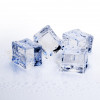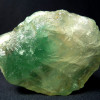A novel type of implantable temporary pacemaker has been developed that naturally absorbs into the body in under two months, similar to absorbable sutures.
The pacing device is functionally similar to traditional pacemakers and is wireless, has no battery and disappears when it's no longer needed.
Traditional temporary pacemakers require external leads connecting the patient’s chest to a pacing box that controls the rhythm of the heart.
This new technology, developed by a team at Northwestern University, eliminates the risk of both the leads and surgically extracting the device after the patient has fully recovered.
As the new pacemaker has no battery, the device is powered by technology similar to that used to wirelessly charge smartphones, and is described in the study published in the journal Nature Biotechnology.
“We have an external transmission antenna that provides radiofrequency electromagnetic power to the device remotely,” explains John Rogers from Northwestern University, “to deliver stimulating electrical pulses to the heart to perform the pacing.”
The device is light and thin, weighing less than half a gram and only 250 microns thick.
By varying the thickness and composition of the materials in the device, the team can vary the amount of time it remains functional before dissolving.
All the components of the device are water-soluble and “just dissolve over time and disappear completely at a molecular level,” Rogers notes, “and are naturally excreted from the body.”
The team plan to conduct human trials of the device in the near future.










Comments
Add a comment